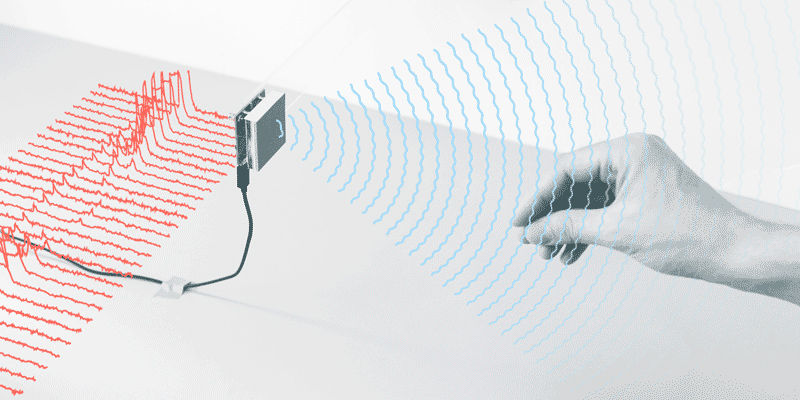
Google's radar-based gesture control system for mobile devices, Project Soli, isn't dead yet. The project, which was announced all the way back in 2015, has popped up at the FCC, where it has been approved for use in the 57- to 64-GHz frequency band.
Project Soli's goal is to build a tiny radar system on a chip that can be used to detect hand gestures made above a device. Soli is only at the experimental stage right now, but Google usually pitches Soli as a concept control scheme for smartwatches, speakers, media players, and smartphones. Usually the gestures shown are things like tapping your thumb and index finger together for a virtual button press or rubbing the two fingers together to scroll or turn a dial. The idea makes the most sense for tiny devices like a smartwatch, which don't necessarily have the space for a sizable touch screen and lots of buttons. It could also have benefits for users with limited mobility.
The FCC's decision actually lets Google use Soli at higher than the currently allowed power levels, which was apparently needed to make the chip work. Google originally wanted approval for a power level in line with the European Telecommunications Standards Institute standards but was talked down, oddly enough, by Facebook, which was concerned about interference issues. Facebook is interested in 60GHz broadband through its "Terragraph" project.
The FCC said the decision "will serve the public interest by providing for innovative device control features using touchless hand gesture technology."
ATAP’s sketchy track record
The biggest news to come out of the FCC documents is just that Project Soli isn't dead. The project is being developed at Google's "Advanced Technology and Projects" (ATAP) division, which is infamous for announcing important-sounding projects that never see the light of day.
Google's ATAP division was started by Regina Dugan, the former head of DARPA, back when Google owned Motorola. The group was created as a mobile-centric skunkworks with projects focused on a two-year timeline, after which they were supposed to be spun out of ATAP as a standalone project or shut down. The group has generated a lot of press coverage but very little in the way of impactful product launches. Usually ATAP's projects are announced, hyped up, and then quietly cancelled years later or are never heard from again. Given that Dugan once said ATAP is supposed to be "unafraid of failure," it's seems that the low hit rate is supposed to be part of the group's design.There was Project Ara, a scheme to build modular smartphones, which was developed for three years, frequently delayed, and eventually cancelled in 2016. "Project Abacus" was a crazy smartphone authentication method announced in 2015 that aimed to use every sensor in a phone—the front camera, microphone, GPS, touchscreen usage, and more—to continually authenticate a user with a "trust score," alleviating the need for a password. The idea sounded like a huge battery hog, but we will never know since the project was quietly killed at some point, or at least, it was scrubbed from ATAP's site and hasn't been mentioned for years. Project Vault was an SD card with a secure computing environment onboard, requiring separate authentication to access. Vault was another 2015 project that quietly disappeared, but there is a dormant repository here.
In terms of ATAP projects that actually saw the light of day, there was Project Jacquard, which saw Google team up with Levis to make a $350 jean jacket with a small touch panel in the sleeve. The most successful outing was probably Project Tango, which was a 3D-sensing smartphone loaded with specialized sensors. Tango was eventually cancelled, with much of the software work rolled into Android's ARCore, which employs a more limited AR feature set using standard smartphone hardware. If you want to count software (every other ATAP project is hardware-focused), the group produced Google Spotlight Stories, which is a 360 video format.Besides the already-launched Jacquard and Spotlight Stories, Soli is the last remaining project on ATAP's website. Supposedly, a few developer kits were offered to a select group in 2016, but since then we haven't heard much from the project. Will we ever see it in a commercial device?
https://arstechnica.com/gadgets/2019/01/googles-project-soli-radar-gesture-chip-isnt-dead-gets-fcc-approval/Bagikan Berita Ini














0 Response to "Google's “Project Soli” radar gesture chip isn't dead, gets FCC approval - Ars Technica"
Post a Comment